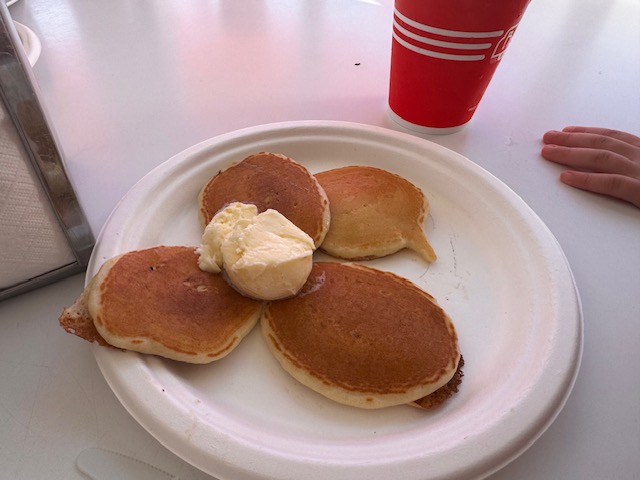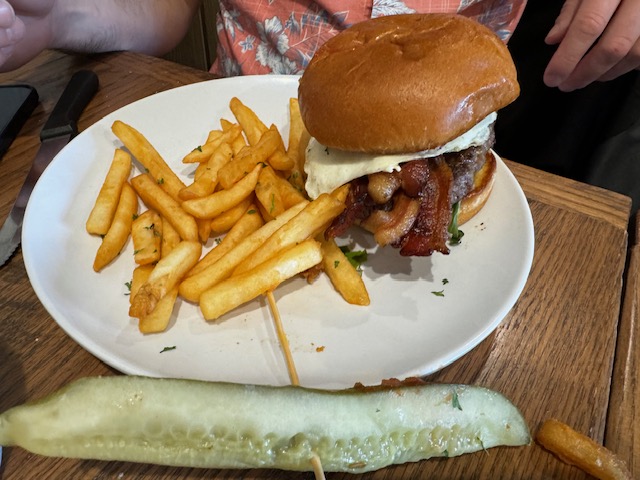Calculate waste with this Food Waste Management Calculator. Get insights on total monthly and annual waste costs, see waste amounts per food item, and identify savings potential for every 1% waste reduction.
Food Waste Management Calculator
Track and optimize your restaurant's food waste costs
Results (Click Calculate Food Waste to update)
Waste by Category
How to use the food waste calculator
Step 1: Enter Food Item Details
- Select the food category (e.g., Produce, Meat, Dairy).
- Enter the food item name.
- Input the quantity purchased per week.
- Select the unit of measurement (lbs, kg, or units).
- Enter the cost per unit.
- Input the estimated waste percentage.
Pro Tip: To get a clear picture of food waste in your restaurant, it’s best to track waste over a 30-day period. A full month gives you enough data to see trends without being too short or too long. With 30 days, you’ll account for things like busy weekends, slow weekdays, and maybe even some seasonal variations. If you want even more accuracy, you could extend it to 60 or 90 days to see if the trends hold steady.
Step 2: Add Multiple Items (Optional)
- Click “Add Food Item” to track up to 10 different items.
- Use the “×” button to remove items if needed.
Step 3: Calculate Results
- Click “Calculate Food Waste” to update the results.
- View detailed breakdowns for each item.
- See category totals at the bottom.
Behind the Numbers: Our Calculation Methods
Here are the basic calculations used in this calculator:
Weekly Total Cost: Weekly Total Cost = Quantity Purchased × Cost per Unit
Example: 20 lbs × $1.28/lb = $25.60
Waste Quantity: Weekly Waste = Weekly Quantity × Waste Percentage
Example: 20 lbs × 10% = 2 lbs wasted per week
Monthly Waste Cost: Monthly Waste Cost = (Weekly Total Cost × Waste Percentage) × 4 weeks
Example: ($25.60 × 10%) × 4 = $10.24 per month
By default this tool is set at 10% food waste. According to reports, restaurants waste between 4% to 10% of food on average for a variety of reasons that range from spoilage to over-preparation of food.
Annual Waste Cost: Annual Waste Cost = Monthly Waste Cost × 12 months
Example: $10.24 × 12 = $122.88 per year
Potential Savings per 1% Reduction in Food Waste: Savings per 1% = Annual Waste Cost ÷ Current Waste Percentage
Example: $122.88 ÷ 10% = $12.29 saved per 1% reduction.
One of my favorite calculations in the Food Waste Management Calculator is the Potential Savings per 1% Reduction in Food Waste. It’s a powerful way to see how even a small cut in waste can make a big impact on your bottom line.

Evaluate food waste for high-cost items like seafood and steak first.
For example, let’s say your restaurant spends $50,000 annually on filet steaks, a high-cost item with a waste rate of 10%. That means $5,000 a year is lost just to waste on one product. Now, if you manage to reduce waste by even 1%, that’s an extra $500 saved. Each percentage reduction stacks up over time, making a noticeable difference in your profit at the end of the year. This report says restaurants and food businesses lost $2.6 billion annually in food waste so there’s plenty of pork to cut.
What can you do to cut waste?
Once the Food Waste Management Calculator reveals where waste is leaking from your kitchen, the real work begins. Here’s a deeper look at solutions to the most common culprits of food waste and how you can turn those insights into big savings.
1. Spoilage: Smart Storage and Rotation
Spoilage often boils down to storage issues, and the solution starts with a sharper eye on organization and rotation. Make it a rule to adopt FIFO—first in, first out. Label everything with the date it arrived so that older ingredients move to the front and get used up first. For those precious items like filet steaks, consider extra temperature monitoring to ensure they’re kept at the right chill or even dedicated shelves to keep high-cost items separate and safe.
2. Overproduction: Dial Down Portions and Batch Sizes
If overproduction is eating into your profits, it’s time to reevaluate portion sizes and batch cooking. Start by using customer data—maybe that half-portion salad has been more popular lately, or diners consistently leave a quarter of their entrées untouched. Scale portions to fit the demand and focus on preparing in smaller batches to minimize leftovers.

Regularly evaluate portion size of all menu items to avoid waste.
Action Steps: Think about running limited-time specials to clear surplus or making certain items “made to order” during off-peak hours. Adjust recipes to make production more flexible, like prepping ingredients that can be repurposed across several dishes. And if customer preference shifts, so should your portions; the calculator’s tracking can help you adjust based on seasonal or weekly trends.
3. Portion Adjustments and Customer Feedback
If diners consistently leave behind certain side dishes or toppings it could be time for a menu overhaul or portion tweaks. Encourage waitstaff to collect feedback on portion sizes and offer customizable options for certain dishes like sides and toppings.

Is this portion too big? I don’t think so.
Customer-Driven Solutions: Think about offering small, medium, and large portions to let diners choose what suits them. Or, go seasonal; switch ingredients that tend to go unused with trendy or popular items that sell. Tracking preferences over time gives you real data to adjust portions or ingredients based on demand.
When you cut down on waste, you’re not just saving money, you’re helping the environment, which will appeal to some customers. Show them your commitment to sustainability by sharing your efforts on social media whether it’s by reducing waste or starting a recycling program for kitchen scraps.
Related Tools:
Menu Recipe Scaling & Food Cost Calculator: Simplifies adjusting recipes for any serving size while accurately calculating ingredient costs and ideal pricing. Combined with food waste tracking, it’s a powerful way to optimize restaurant costs.